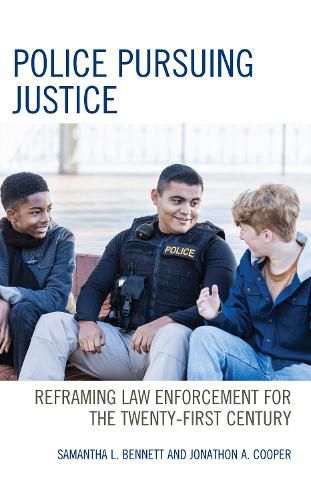Readings Newsletter
Become a Readings Member to make your shopping experience even easier.
Sign in or sign up for free!
You’re not far away from qualifying for FREE standard shipping within Australia
You’ve qualified for FREE standard shipping within Australia
The cart is loading…






Using the commonwealth of Pennsylvania as a case-study, along with two other states as controls, this book examines how BARJ legislation "trickles down" to the law enforcement level through Pennsylvania's Juvenile Justice System Enhancement Strategy (PJJSES) and the Juvenile Justice Act (JJA). This legislation is a direct application of the BARJ model to law enforcement, essentially directing police discretion in the direction of informal dispositions. The decision to dispose formal action (such as, a referral to either juvenile court/probation, criminal court, or adult criminal court) or informal action (for instance, handling the situation within the department and/or releasing the juveniles to parents with a warning), play an integral role in determining which juveniles contact the justice system. To this end, while the overall focus of our volume and research is specifically on the impact of the PJJSES and its 2012 amendments on the number of formal dispositions of juvenile suspects by law enforcement officers, it speaks more broadly to the ability of the BARJ model to affect police officer behavior through influencing their decision-making processes.
$9.00 standard shipping within Australia
FREE standard shipping within Australia for orders over $100.00
Express & International shipping calculated at checkout
Using the commonwealth of Pennsylvania as a case-study, along with two other states as controls, this book examines how BARJ legislation "trickles down" to the law enforcement level through Pennsylvania's Juvenile Justice System Enhancement Strategy (PJJSES) and the Juvenile Justice Act (JJA). This legislation is a direct application of the BARJ model to law enforcement, essentially directing police discretion in the direction of informal dispositions. The decision to dispose formal action (such as, a referral to either juvenile court/probation, criminal court, or adult criminal court) or informal action (for instance, handling the situation within the department and/or releasing the juveniles to parents with a warning), play an integral role in determining which juveniles contact the justice system. To this end, while the overall focus of our volume and research is specifically on the impact of the PJJSES and its 2012 amendments on the number of formal dispositions of juvenile suspects by law enforcement officers, it speaks more broadly to the ability of the BARJ model to affect police officer behavior through influencing their decision-making processes.